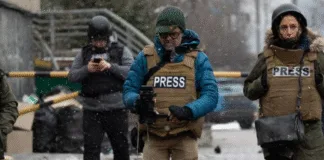A fragile agreement brings relief on both sides of a border long defined by grief
3 Narratives News | October 9, 2025
“For the first time in months, I can imagine the door opening,” said a mother in Hostages Square, as crowds gathered to await news of returns.
It’s been two years of war and devastation, Israel and Hamas accepted the first phase of a ceasefire and exchange plan negotiated in Egypt with support from the United States, Qatar, and Turkey. According to Reuters, the agreement covers the release of all remaining hostages and a withdrawal of Israeli forces to a designated line, with international backing to open aid corridors. AP reports that hostages and Palestinian prisoners will be exchanged as fighting pauses. The Guardian notes that international monitors will be tasked with tracking implementation.
It is not the end of the conflict. For Israelis, it is a path toward the return of sons and daughters. For Palestinians, it is the first sight of bread, water, and equipment to clear roads for rebuilding. Across both lands, relief mixes with disbelief.
Israel’s relief, homecoming, and memory
In Israel, the announcement brought both cheers and long silence. Crowds formed outside hospitals and in city squares as lists began to circulate. Officials say roughly forty-eight hostages remain, and about twenty are believed alive, as of today. The remains of others are expected to be returned as part of the agreement. Reuters noted scenes of celebration, along with tears and prayers.
Families who kept vigil outside the prime minister’s residence folded tents and candles, then prepared to meet returning relatives. “We stopped counting the days,” one brother said on Israeli television. “Now we count the hours.”
Politics has not vanished. Some coalition figures view the agreement as a moral duty, while others consider it a mistake. Inside most homes, the argument fades behind a single wish: the sound of returning footsteps, the burial of the lost, and an exhale after long strain.
Palestine’s renewal, aid, and first light

In Gaza, news moved faster than statements. Word spread from mosques and phones to streets powdered with dust. Families stepped from shelters, waved cloth flags, and watched the first aid trucks roll. The Associated Press described jubilation amid ruin as convoys crossed Rafah. Bakeries lit ovens. Hospitals received fuel for generators. Children ran after the trucks asking for water and biscuits.
People understand the limits. The pause is temporary. Questions remain about who will lead reconstruction, how the displaced will return, and whether calm can last. For now, the work is simple and immense: feed the hungry, find the missing, open the roads, and rest.
The silent story, shared exhaustion, and the cost of endurance
Beneath the statements runs a current that helped carry this deal. Both societies are exhausted. In Tel Aviv, empty chairs from nightly vigils line the pavement, reminders of those not yet home. In Gaza City, new graves outnumber classrooms. The desire for peace is no longer an idea; it is a need for sleep, safety, and ordinary time.
Psychologists warn that trauma on this scale will not fade with signatures. Two generations of Israelis grew up under sirens. Two generations of Palestinians grew up inside a blockade. Yet this fatigue may be the strongest case for change.
“People are too tired to hate,”
said a nurse in Beersheba who volunteers in border clinics. “They want the bleeding to stop.”
Whether this agreement holds will depend on leaders who do not trust each other. The will for normal life may prove stronger than ideology. Hope appears in small gestures, a loaf of bread, a phone that rings, a door that opens.
Key Takeaways
- Israel and Hamas accepted the first phase of a ceasefire and exchange plan that includes the release of all remaining hostages and a withdrawal of Israeli forces to an agreed line. Sources: Reuters, AP.
- About twenty of the remaining forty eight hostages are believed alive as of October 9, 2025. The remains of others are expected to be returned. Source: Reuters.
- Humanitarian corridors are opening for food, water, medicine, and fuel, with international monitoring. Sources: AP, The Guardian.
- Israel faces internal debate over the terms. Palestinians face the immediate test of aid delivery, shelter, and early rebuilding. Sources: Reuters, AP.
- The deeper current is shared exhaustion that may help sustain a pause long enough for next steps. Analysis across The Guardian and field reports.
Questions This Article Answers
What are the main terms of the new agreement?
How many hostages are still alive, and what happens to the deceased?
What does the deal change for aid and early reconstruction?
How are communities in Israel and Gaza responding on the ground?
What could help this fragile pause hold?

[…] Reading, Hope at Last, What Israel and Palestine Have to Celebrate | Cobalt Mining and the Cost of Clean […]
[…] Hope at Last: What Israel and Palestine Have to Celebrate (Oct 9, […]